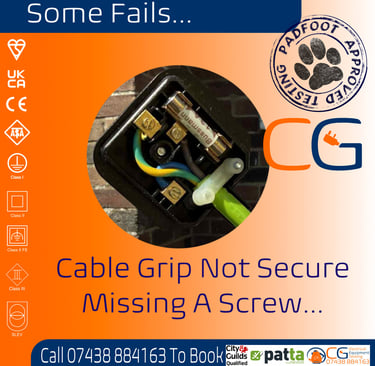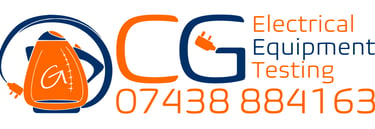Why The Cable Grip On A UK 13A Plug Is More Important Than You Think
If you've ever rewired a plug, you probably focused on connecting the right wires to the correct terminals—live (brown) to the right, neutral (blue) to the left, and earth (green/yellow) to the top. But there's one small but crucial component that often gets overlooked or misused: the cable grip.
ELECTRICAL SAFETY
7/25/20252 min read


Why The Cable Grip On A UK 13A Plug Is More Important Than You Think
If you've ever rewired a plug, you probably focused on connecting the right wires to the correct terminals—live (brown) to the right, neutral (blue) to the left, and earth (green/yellow) to the top. But there's one small but crucial component that often gets overlooked or misused: the cable grip.
What Is the Cable Grip?
The cable grip (also known as the cord grip or strain relief) is the part at the base of a 13A plug that holds the outer sheath of the cable securely in place. It typically consists of two plastic jaws and a screw that tightens them over the cable.
Why Is the Cable Grip Important?
Prevents Wire Strain and Damage
Without the cable grip secured, any tug or pull on the cable can transfer stress directly to the internal wires and terminals. Over time, this can loosen the connections, cause fraying, or even break the wires—leading to overheating or short circuits.
Enhances Electrical Safety
A poorly secured cable increases the risk of the live wire becoming detached and coming into contact with the neutral or earth terminals. This can create a potentially dangerous electrical fault that may not be obvious until something goes wrong.
Complies with Electrical Regulations
Proper use of the cable grip is not just good practice—it’s required by UK electrical safety standards. An incorrectly fitted plug can be considered unsafe and might invalidate warranties or insurance policies.
Prolongs Cable and Appliance Lifespan
The cable grip helps protect the integrity of the cable over time. Appliances that experience frequent movement—like vacuum cleaners or power tools—particularly benefit from this simple but effective component.
Common Mistakes to Avoid
Clamping the Inner Wires: The grip should secure only the outer sheath of the cable—not the individual colored wires inside.
Overtightening: While the grip should be firm, overtightening can damage the sheath or distort the plug casing.
Loose Grip: If the cable still moves after tightening, you haven’t gripped it properly. Some plugs come with different grip positions to accommodate various cable sizes.
Final Thoughts
The cable grip might seem like an afterthought, but it plays a key role in ensuring electrical safety and durability. Whether you're a DIYer replacing a damaged plug or an electrician wiring a new appliance, never underestimate the importance of this small but mighty feature.
Safety starts with the details—and in the case of a 13A plug, the cable grip is one detail you can't afford to get wrong.
Things we see during our testing...
Reliable appliance testing across South Wales.
© 2025. All rights reserved.






